2022 Maruti Suzuki Baleno first drive review
Maruti Suzuki's dominant position in the Indian market has come on the back of it consistently delivering products that perfectly fit the needs of a specific section of the Indian car-buying public. While most of these best-sellers have been at the more frugal end of the market, first the Swift and now the Baleno have stood out. The Swift started the premium hatch rage in the country, and the Baleno has only advanced this popularity further. The hatchback debuted the Nexa retail channel and in the six years since a staggering 15 lakh units have been sold, or once every three minutes! So with these stakes at hand, it's no wonder that Maruti Suzuki has taken its time to bring the Baleno up to scratch against rivals who have slowly started picking away at its pie.

2022 Maruti Suzuki Baleno Styling and dimensions
The 2022 Maruti Suzuki Baleno continues to be based on the Heartect platform, and even though this isn't too apparent visually, significant changes are afoot. Every body panel has been changed but Maruti has been careful to not mess with its winning formula, so the general shape of the previous car has been faithfully recreated. The new face with its widened and more prominent grille and the distinct L-shaped LED projector lamps with the sharp three-part LED light signature firmly bring the Baleno up to current design themes, while giving the hatch a more purposeful stance, even though it is no wider than the previous car. The 10mm drop in height helps with this while length has reduced marginally by 5 mm, although the stark bonnet shut line could have been better integrated.
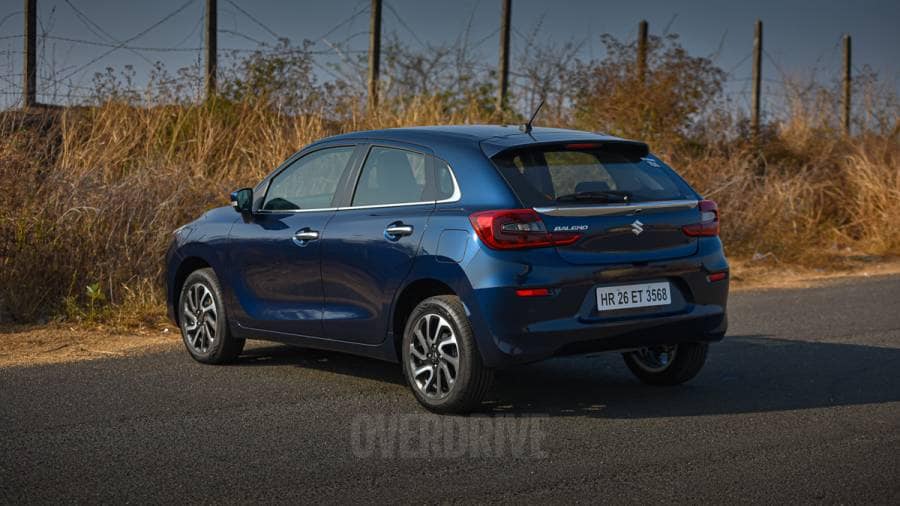
But look past this, and only a keen eye will tell you that the Baleno is also new in profile, as seen by the deeper recesses for the door handles and the different fuel-filler cap position. The new alloy wheel design also looks smart but a striking touch, further along, are the more prominent haunches over the rear wheels. These again widen the Baleno's stance, complemented by the new C-shaped taillamp design, although again the tailgate and the rear bumper remain largely the same as before.
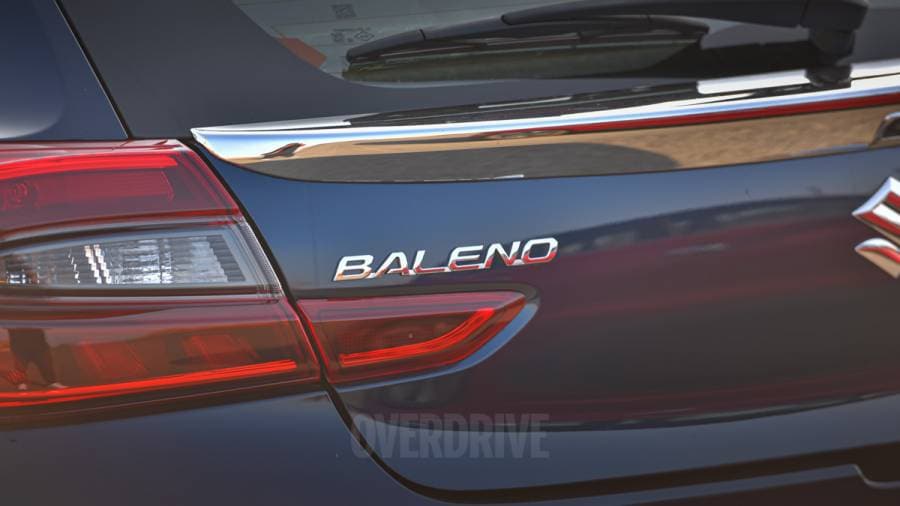
We can't help but think Maruti Suzuki could have been a touch more adventurous with the Baleno's looks with this change, in the same way it has reinterpreted the Swift differently each time over its generations. But having said that, these changes have been successful, doing away with the slightly plain looks of the previous car, and adding a fair dose of modernity in the process.
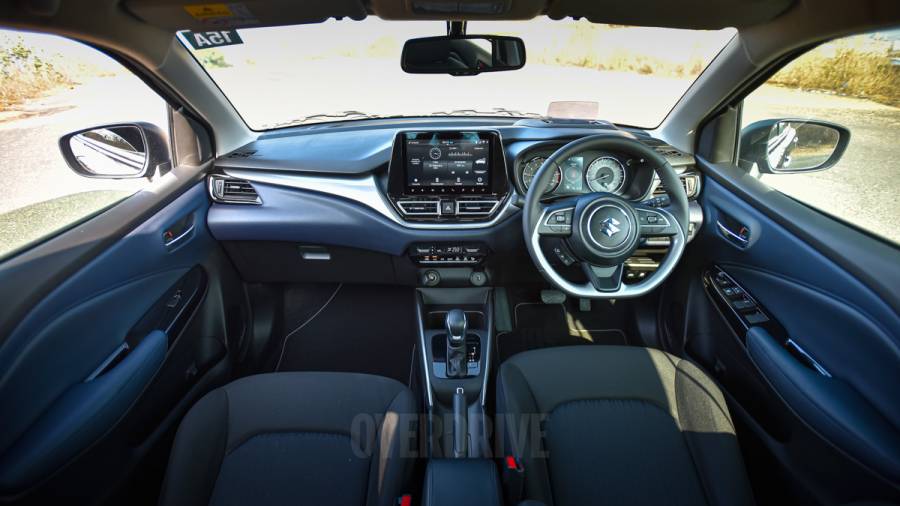
2022 Maruti Suzuki Baleno Interiors and features
About 25 per cent of the 60 kgs that have been added to the top Maruti Suzuki Baleno's kerb weight have gone into beefing up the hatch's bodywork, and this is apparent when you reach for the doors. Once inside, the changes follow the thought behind the outside. Although the revamp is much more immediately apparent here. The Baleno had fallen behind the pack in terms of the features and tech it offered and bridging that gap seems to have been a priority.
So the new dash is done up in a more contemporary style with a grey and blue dual-tone finish. The silver-painted highlights along the width of the dash and around the more appealing flat air vents in the middle are also fairly well executed. The level of fit and materials used are up to the same standard as before but there has been more thought given to improving perceived quality.
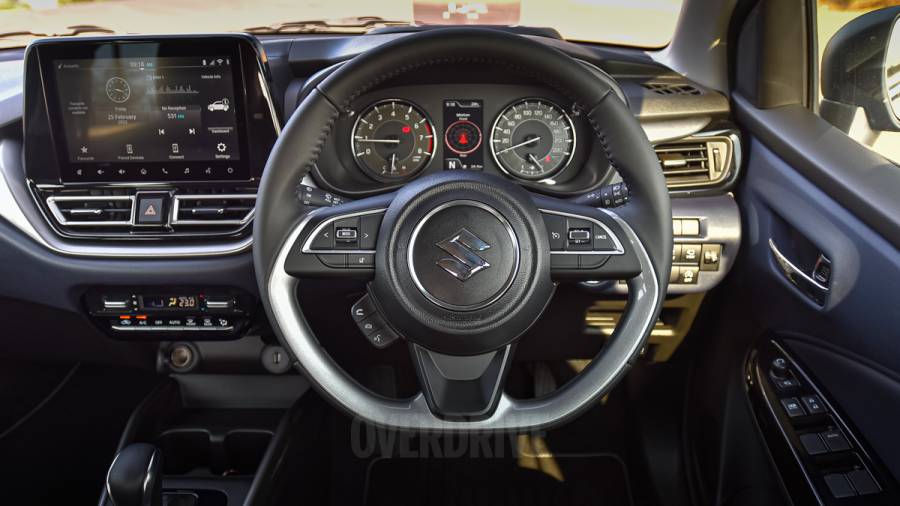
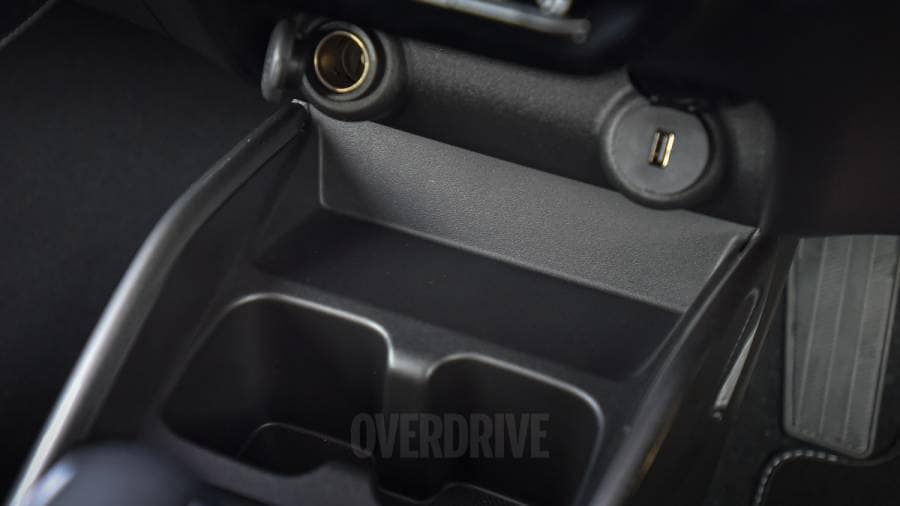
The new steering wheel sourced from the Swift feels a touch nicer to hold while the sliding centre armrest feels quite substantial, as does the soft padding on the doors. However, we would have liked to have seen a bit more tactility added to air vent controls and other switchgear. This has happened to an extent with the far more natural climate control panel with the gloss black and silver finish. Even the seats have changed, and are now much improved from earlier. There's more lateral and under-thigh support while the cushioning used also seems plusher.

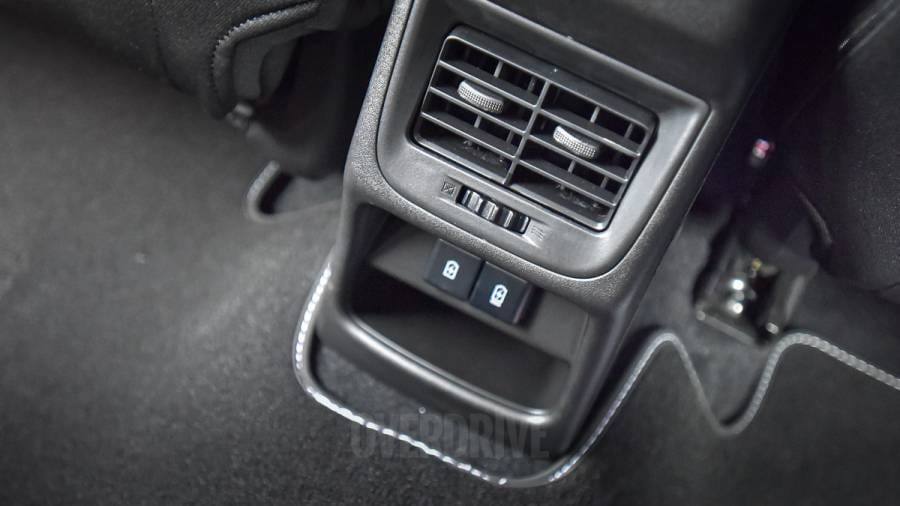
The Baleno has always made for a great family car, and with the 2,520mm wheelbase carried over, that continues with some improvements in the new car. So rear-seat space is as generous as before with a more supportive bench good for two large adults or three in a squeeze. There's still no centre armrest but rear AC vents and two USB ports have now been added.
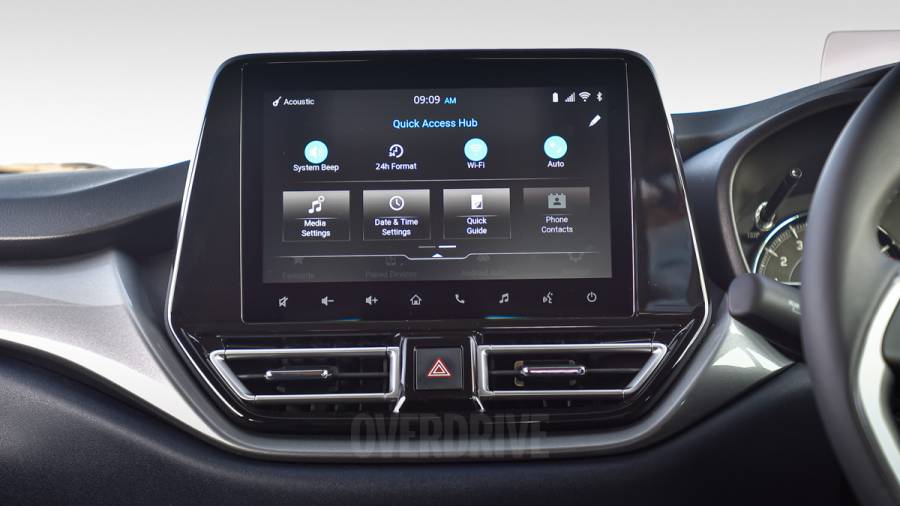
The dominating feature on the inside though is the new 9.0-inch SmartPlay Pro infotainment system. This unit carries on from the earlier smaller system but adds quite a bit more functionality with its full trip data, passable Arkamys sound and a smartphone-like widget-based interface. There could have been more vibrant colours and themes used but the system is responsive and fairly easy to get used to. There's only wired Android Auto/Apple Carplay for now but wireless phone pairing will come in the future. However, with the single USB port in the front, the co-passenger will have to use a 12V adapter.
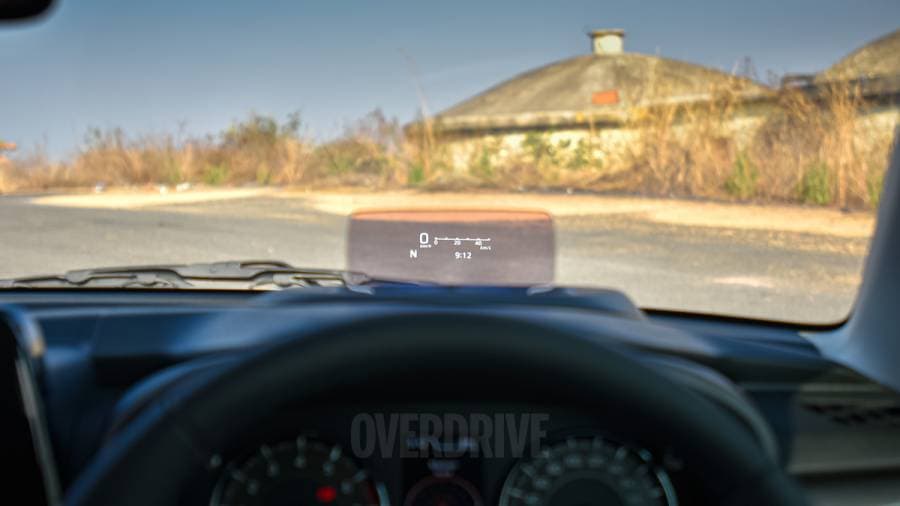
Another striking new feature is the head-up display. This panel folds out on startup from a well-integrated housing in the dash, and doesn't impede vision when folded deployed. The display is bright and informative with three information modes including speed, gear position, revs and fuel consumption, among other things. There is a good range of adjustment to the display, with the display even working with polarized glasses. Much of this information is also visible in the analogue instrument cluster, carried over from the earlier Baleno but done up in a black theme now. The MID also adds more performance gauges, like a G-Meter and a pedal input graph, slightly unnecessary but still a nice gimmick to show off.
Other than this, lower-spec versions get climate control and power windows as standard, and cruise control has been added too. Although, we think rain-sensing wipers should have been a part of the package as well.
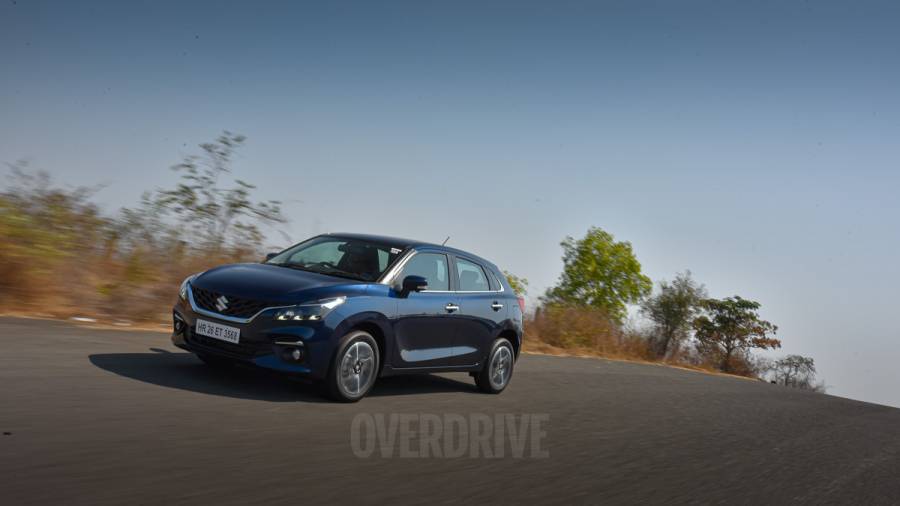
2022 Maruti Suzuki Baleno Driving impressions
The Maruti Suzuki Baleno now gets the new 1.2-litre K12N DualJet motor, as seen in the Swift. The outputs are the same at 90PS and 113 Nm, as are the gearbox options: a five-speed manual and a five-speed AMT replacing the earlier CVT. We already know of this engine's advantages in terms of thermal efficiency and the improvements this brings to performance and efficiency but it is quickly apparent that improvements run far deeper than just that with the new Baleno.
To start with, the new hatch is noticeably quieter and smoother than the previous car. There's barely any noise or vibrations below 2,00 rpm and although this grows as revs build its nowhere near as intrusive as the previous car. And combined with the steady performance on offer right from idle to the rev range, the Baleno is an easy urban runabout. The tractability of the motor means that you always have enough grunt to keep pace with traffic or build speeds reasonably quickly enough on the highway.
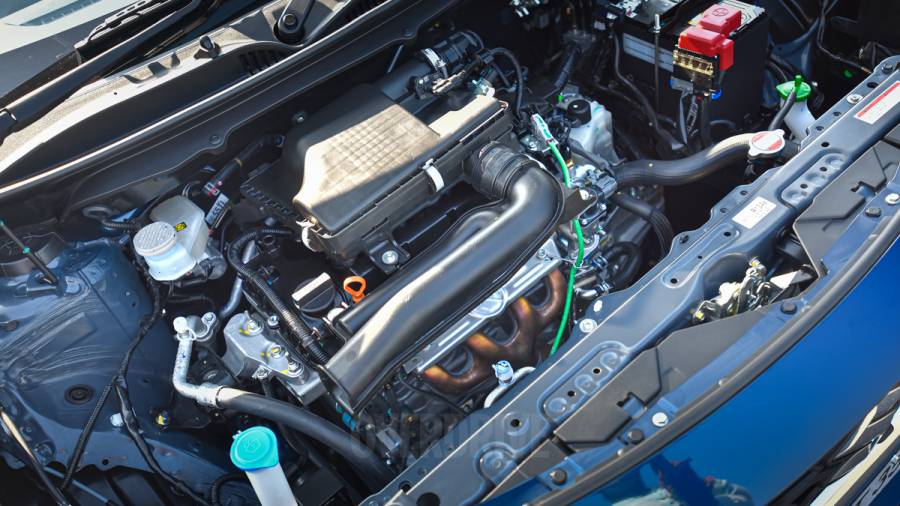
If you really want to get a move on, there's quite a ramp up in performance past 3,000 rpm which sustains right to the redline. And the five-speed manual complement this motor's strengths very well. The wide powerband means that you don't need to shift very often in traffic with most city driving covered between 2nd and third. And when you do need to shift, the new hydraulic clutch has transformed the clutch action into a smooth and progressive process that more often than not results in uninterrupted shifts, quite unlike the abrupt bite-point of the earlier car.
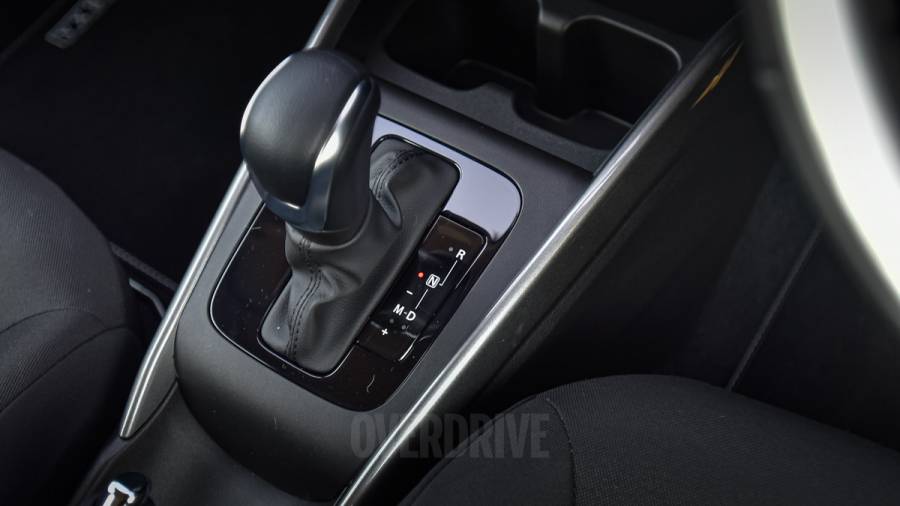
It may not seem so on paper, but shifting to an AMT from a CVT for the automatic option has also brought with it benefits. The earlier CVT wasn't the best example of this tech with its prominent rubber-band effect and power losses and the AMT has done away with most of these issues. This gearbox works similarly to its applications in other Maruti products, offering smooth, well-timed shifts at lower revs. However, the head-nod effect has still not been dialled away fully, becoming quite apparent under heavier engine loads, a sensation that doesn't quite gel with the richer experience from the rest of the car. The gearbox's tendency to downshift early on inclines, despite the wide powerband also continuing here. But that said, those looking for a Baleno that will be stress-free as a daily commuter will not be disappointed.

The new Baleno now also feels more substantial and better tied down on the move. To start with, the steering now self-centres which combined with the added heft and a positive feel from the wheel makes manoeuvring the Baleno much more confidence-inspiring. The suspension has also been given more travel(up to 20mm extra) and sees a new torsion bar at the rear as well as new springs and bump stops. This has transformed the Baleno's ride quality. The hatch no longer feels tinny and crashy over bokeh roads, moving with more conviction and soaking up all but the biggest of imperfections. There's still some float at highway speeds but the hatch is now a far more comfortable place to spend time in over longer journeys. In fact, these enhancements mean that there's now something to look forward to for enthusiasts here too. Body roll is well controlled around bends, which inspires confidence when combined with the easily accessible performance, taut suspension and fairly direct steering feel.
2022 Maruti Suzuki Baleno Safety
With safety becoming a major differentiator across segments, Maruti Suzuki has responded to criticism by offering the Baleno with six airbags on the top trim. Other than this, the front discs have been enlarged by an inch which makes for confident braking. Further, the 360-degree camera, a segment-first, tough grainy does make negotiating tight spots a breeze. Especially useful is a motion image showing obstacles both from within and around the car.

2022 Maruti Suzuki Baleno Verdict
With this update, the Maruti Suzuki Baleno consolidates its position as the segment leader further. The Japanese brand has made thoughtful changes to the hatch, which have rectified most of the Baleno's flaws. So the car is now much nicer to drive, even more efficient than before and packs tech that genuinely betters the driving experience. There could have been more differentiated styling and a bigger improvement on the interior finish but with prices topping out well below Rs 10 lakh, the Baleno may be setting sales records for some time to come.
Starts Rs 6.35 Lakhs
1197cc
Manual
90
113
22.94 Kmpl













